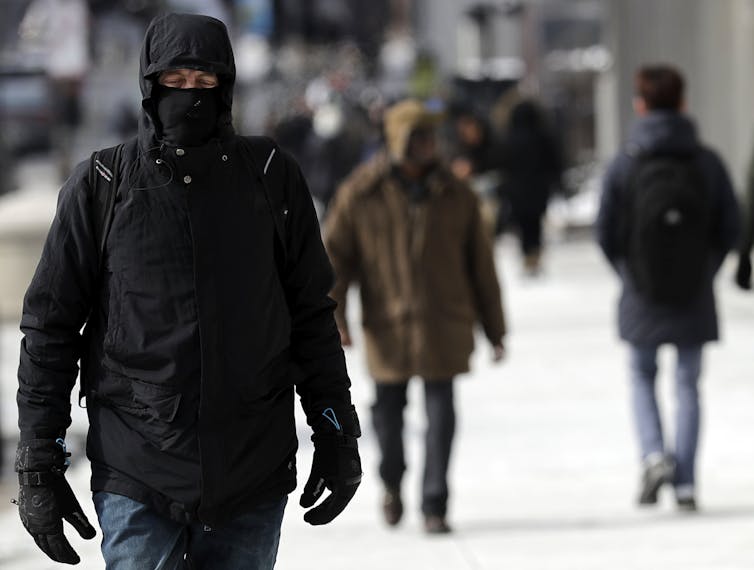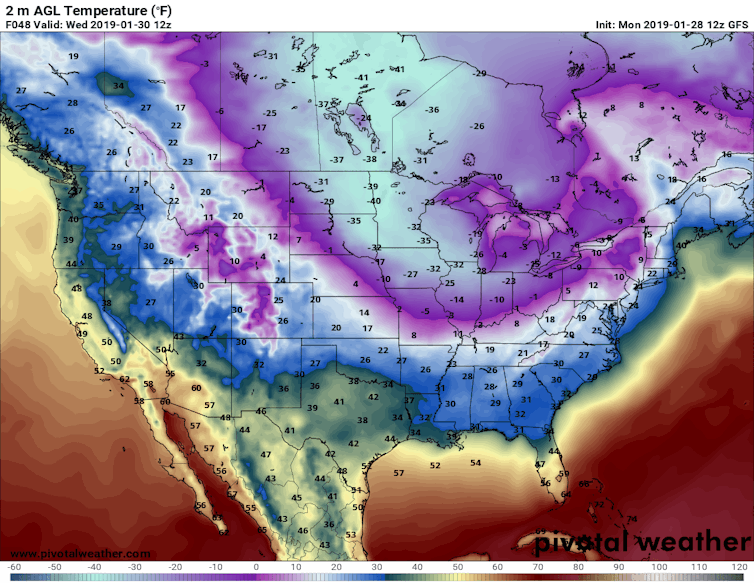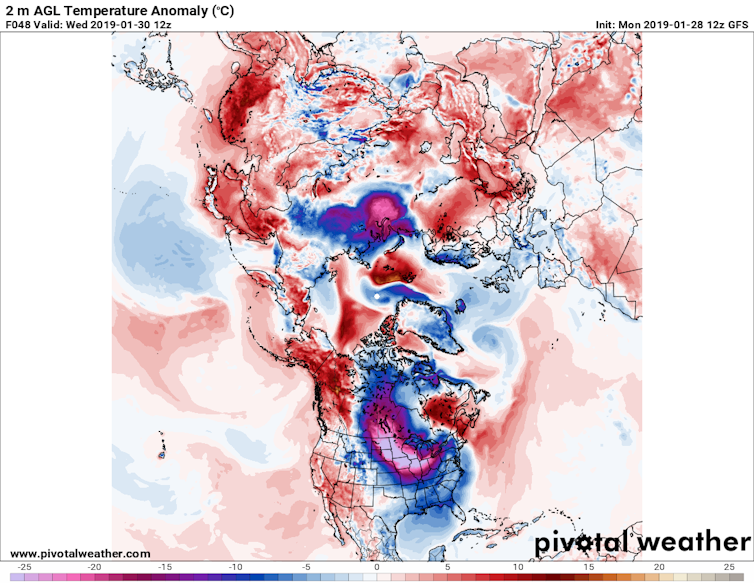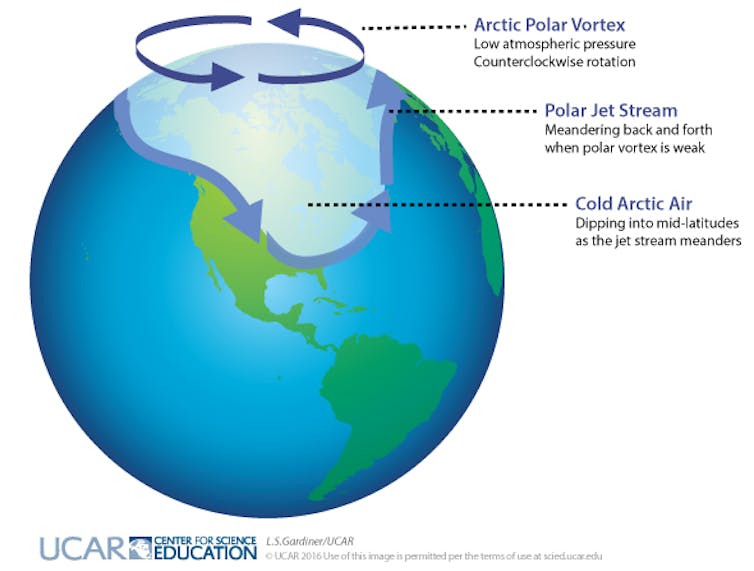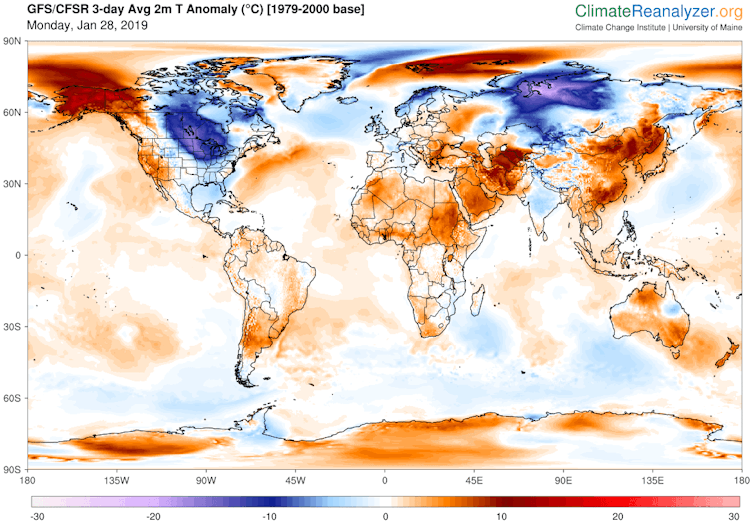Let's walk through the steps once more.
Baseline adjustment
The combination image below shows that the February 2019 temperature was 0.93°C above a 1951-1980 baseline (left) and 1.21°C above a 1885-1915 baseline (right), a difference of 0.28°C.
In other words, when using a baseline that is centered around 1900, the data should be adjusted by 0.28°C. In the image below, the gold graph uses 1951-1980 as baseline and two linear trend are added, one using data starting in 1880 (gold) and one using data starting in 1900 (blue).
Both linear trends are out of line with the recent temperature rise, the gold trend even more so than the blue trend, illustrating that starting a linear trend from an earlier year can make an analysis worse.
As said, if we want to use a baseline that is centered around 1900, the data should be adjusted by 0.28°C, and this is what the green graph does. A 4th-order polynomial trend is added that lines up perfectly with zero at the year 1900.
Further adjustment is needed for a 1750 baseline, which better reflects preindustrial as in the Paris Agreement. As discussed in an earlier post, this could result in an additional adjustment of 0.3°C.
Higher Arctic temperature
Furthermore, have another look at above maps. Much of the extreme anomalies are in line with changes to the Jet Stream, as also illustrated by the insert. More cold air escaping the Arctic and more warm air entering the Arctic are both speeding up Arctic warming. In the map on the right, much of the Arctic is left grey, since no data are available for the Arctic around 1900, but the Arctic should not be left out of the picture and adding a further 0.1°C adjustment seems appropriate to better include the Arctic.
Air temperature over oceans
Finally, the NASA temperatures for oceans are the surface temperatures of the water, but it makes more sense to use air temperatures close to the water, which likely adds a further 0.1°C. This adds up a total adjustment of 0.78°C as applied in the red graph, which also has an 8th-order polynomial trend added.
Which trendline works best?
How appropriate is it to apply an 8th-order polynomial trend to climate data? Have another look at above graphs and consider that in the gold graph, R²=0.687 for the gold linear trend (1880-Feb 2019 data) and R²=0.752 for blue linear trend (1900-Feb 2019 data), while in the green graph, R²=0.812 for the dark green 4th-order polynomial trend, and in the red graph, R²=0.828 for the pink 8th-order polynomial trend. In other words, the pink trend better follows the ups and downs of the data than the lower-order polynomial trend, and it does so much better than the linear trends that both are clearly unrealistic in an analysis of warming acceleration.
Selecting the axes
 Is warming accelerating? Trend analysis that uses data going back many years can only be part of the picture; it's also important to anticipate changes that loom in the near future. When taking the many feedbacks, tipping points and further warming elements more fully into account, warming could accelerate even more strongly than depicted in the red trend in the graph at the top.
Is warming accelerating? Trend analysis that uses data going back many years can only be part of the picture; it's also important to anticipate changes that loom in the near future. When taking the many feedbacks, tipping points and further warming elements more fully into account, warming could accelerate even more strongly than depicted in the red trend in the graph at the top.In the 'Extinction Alert' graph at the top, the vertical axis is cut off at 5°C, since life on Earth will already have disappeared by then (see box on the right), but when looking at near-term human extinction, 3°C will likely suffice.
How soon could 3°C warming be reached? The 'Extreme Alert' image below looks at data over the past decade, and a fifth-order polynomial trend (red) shows how warming could cross 3°C as early as next year.
How could such a scenario eventuate?
In such a rapid warming scenario:
- a stronger-than-expected El Niño would contribute to
- early demise of the Arctic sea ice, i.e. latent heat tipping point +
- associated loss of sea ice albedo,
- destabilization of seafloor methane hydrates, causing eruption of vast amounts of methane that further speed up Arctic warming and cause
- terrestrial permafrost to melt as well, resulting in even more emissions,
- while the Jet Stream gets even more deformed, resulting in more extreme weather events
- causing forest fires, at first in Siberia and Canada and
- eventually also in the peat fields and tropical rain forests of the Amazon, in Africa and South-east Asia, resulting in
- rapid melting on the Himalayas, temporarily causing huge flooding,
- followed by drought, famine, heat waves and mass starvation, and
- collapse of the Greenland Ice Sheet.
Even when adding a rather inappropriate linear trend (as done in the 'Extreme Alert' image, in blue), warming still looks set to cross 2°C by 2026 in the Extreme Alert image, but as the chart below shows, there could be a rise of as much as 18°C by 2026.
 |
| [ from an earlier post ] |
links
• Co-extinctions annihilate planetary life during extreme environmental change, by Giovanni Strona and Corey Bradshaw (2018)
https://www.nature.com/articles/s41598-018-35068-1
• How much warming have humans caused?
https://arctic-news.blogspot.com/2016/05/how-much-warming-have-humans-caused.html
• Extinction
https://arctic-news.blogspot.com/p/extinction.html
• A rise of 18°C or 32.4°F by 2026?
https://arctic-news.blogspot.com/2019/02/a-rise-of-18c-or-324f-by-2026.html
• Climate Plan
https://arctic-news.blogspot.com/p/climateplan.html









































